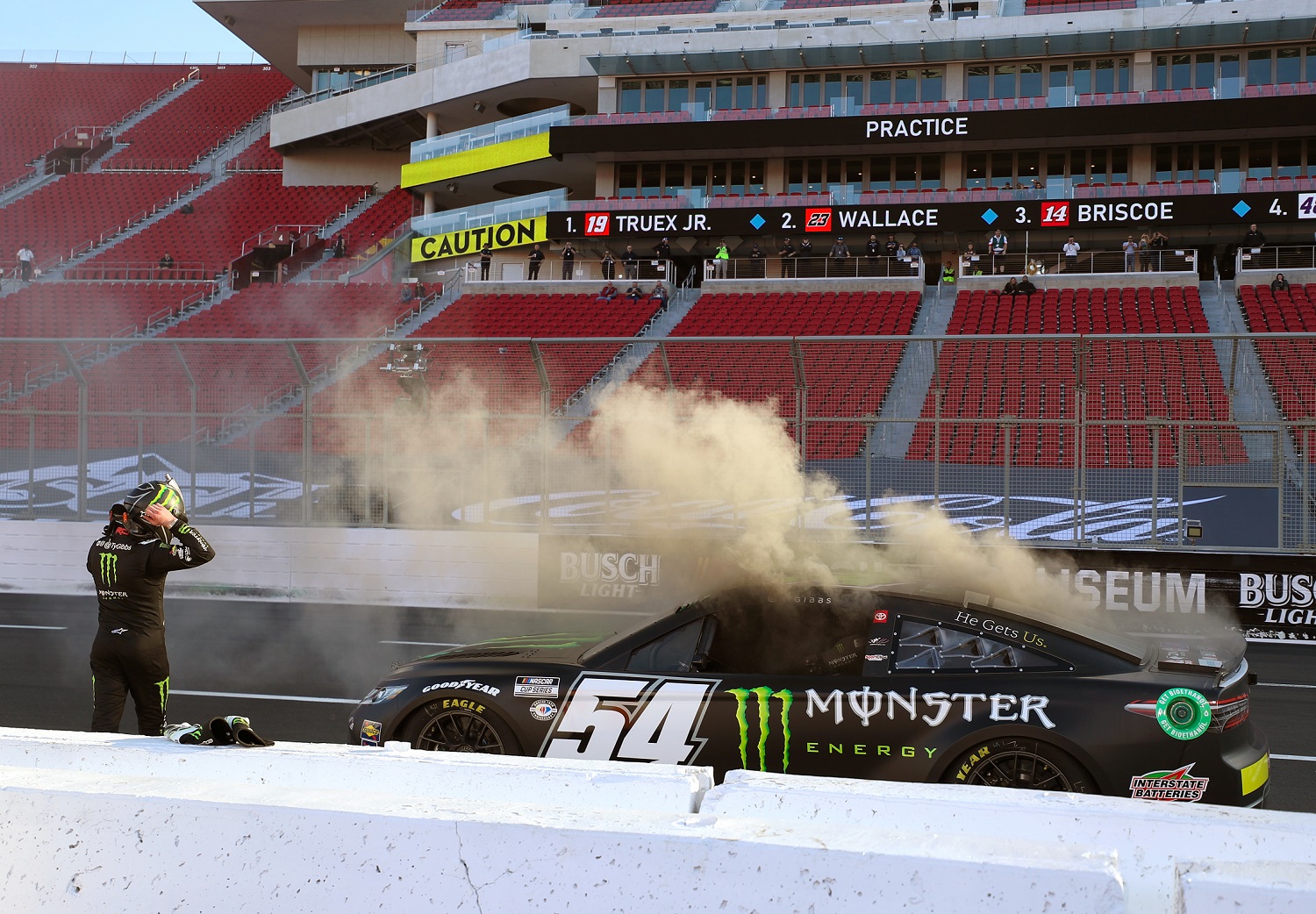NASCAR
Ty Gibbs Demonstrates NASCAR Hasn’t Solved Its Most Dangerous Problem

The good news is the fire leading to Ty Gibbs not being able to run a qualifying lap might not be related to last year’s fires in NASCAR’s Next Gen car. The bad news is also that the fire might not be related to last year’s fires in the Cup Series.
We all dread the day when NASCAR experiences its first crash fatality since Dale Earnhardt in 2001. Given the way things are going, though, it could just as easily be a fire that causes the sport’s next tragedy, and now there may be a new cause behind a past problem.
Ty Gibbs’ car started burning under mildly stressful conditions

Making his Joe Gibbs Racing Cup Series debut, Ty Gibbs was running some fast laps Saturday in his second practice session for the Busch Light Clash in Los Angeles. The No. 54 Toyota was sixth fastest in the session before the 2022 Xfinity Series champion and grandson of the team owner had to bail out as flames shot up through the interior and smoke filled the car.
Gibbs’ problems began in the first practice as light smoke appeared in the cockpit, though it didn’t stop him from completing a session with laps averaging a modest 60 to 65 mph. However, the second incident was a substantial escalation and triggered a red flag on the Los Angeles Coliseum track as safety crews extinguished the flames.
The team towed the car back to the work area outside the stadium to begin work in hopes of making repairs in time for qualifying instead of going to a backup car.
Ty Gibbs will have to scramble on Sunday
Ty Gibbs didn’t keep his predecessor’s car number, but one has to wonder if he inherited the hardware from Kyle Busch’s No. 18 Toyota, or at least the karma. On his way out the door from Joe Gibbs Racing last fall, Busch’s car exited early playoff races at Darlington and Bristol with blown engines.
In this instance, it was the undercarriage rather than something under the hood that seemed to be the problem. NASCAR re-routed the exhaust through the rocker panels during the offseason and added mufflers. There were also design changes to the rocker boxes.
The JGR team probably determined the culprit by late Saturday, but the literal and figurative damage had already been done. NASCAR ruled the crew made unapproved adjustments in the course of repairs, preventing him from going through qualifying.
That sends Gibbs to the back of the back for his qualifying heat on Sunday. Only five of the nine cars in the heats advance to the final. Gibbs won’t have much time to make up the necessary places and could find himself having to emerge from the last chance-qualifiers to advance.
“We have to start last in the heat race but we’ve got a great car,” Gibbs said. “It’ll be fun.”
Fires were an issue throughout the first season of the Next Gen car
Fires like what Ty Gibbs experienced on Saturday have plagued the Cup Series since NASCAR rolled out the Next Gen car last season. Tire dust repeatedly collected near the exhaust and burned, sending smoke and sometimes even flames into the cockpit.
That might not have been precisely the problem this time, as the exhaust may have gotten loose. Had it been an engineering problem, then other cars may have been susceptible. On the other hand, three short practices at a third of the speed of big tracks may not have been sufficient for a widespread problem to emerge.
Whatever the case, fires became more than just a back-burner issue (no pun intended) a season ago. Justin Haley’s No. 31 Chevy burned in the pits at Kansas in mid-May, and then it seemed to be primarily a Ford problem after that, tripping up Joey Logano and Chris Buescher at Indianapolis at the end of July and then Chase Briscoe two weeks later at Richmond.
Once Kevin Harvick’s No. 4 Ford was incinerated three weeks after that at Darlington, forcing him to scramble to the infield, NASCAR had no choice but to issue statements reaffirming a commitment to safety.
It’s worth considering whether some of that focus dissipated with injuries to Kurt Busch and Alex Bowman turning concussions from crashes a major issue over the conclusion of the season. Should more fires break out in the coming weeks, NASCAR will face questions about its commitment and competence.
Got a question or observation about racing? Sports7’s John Moriello does a mailbag column each Friday. Write to him at [email protected].











